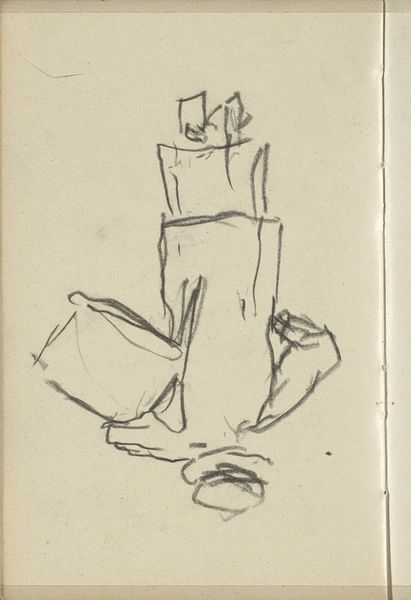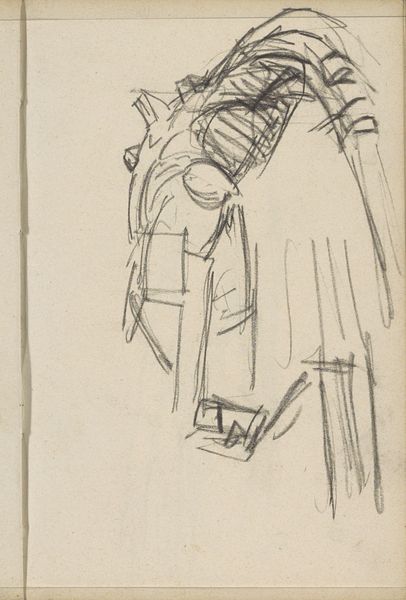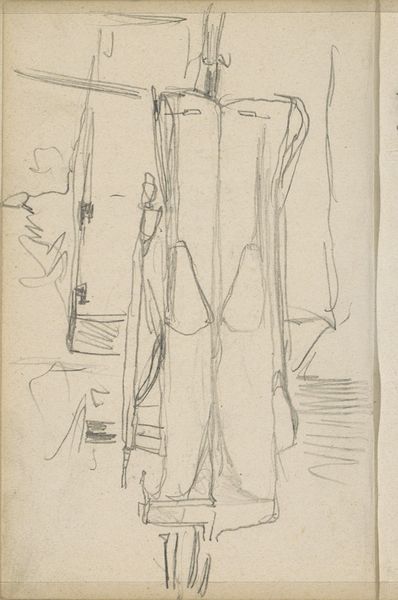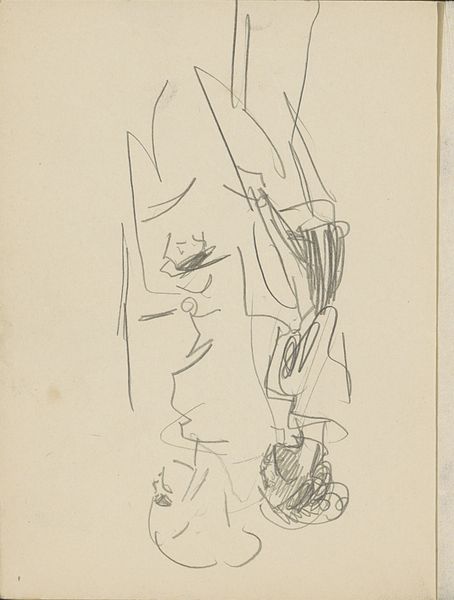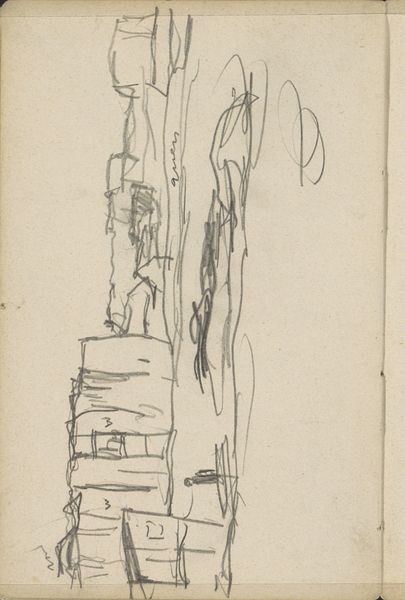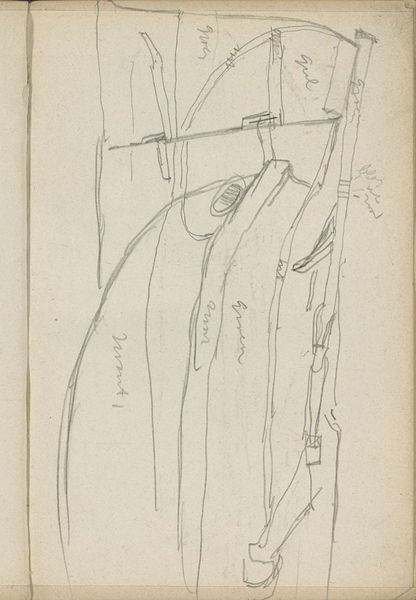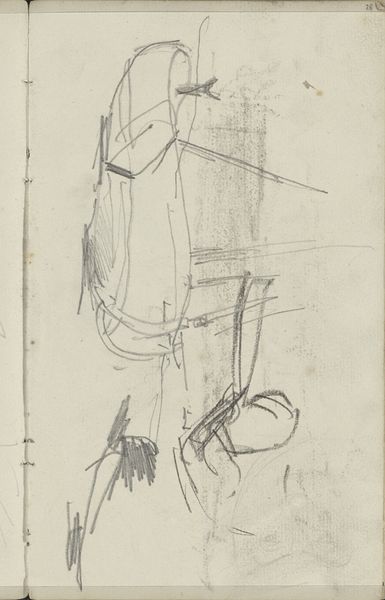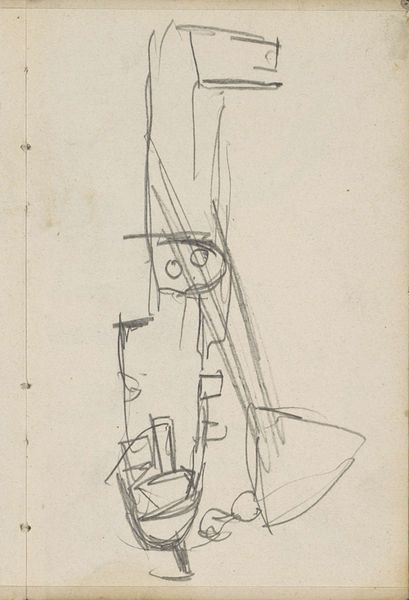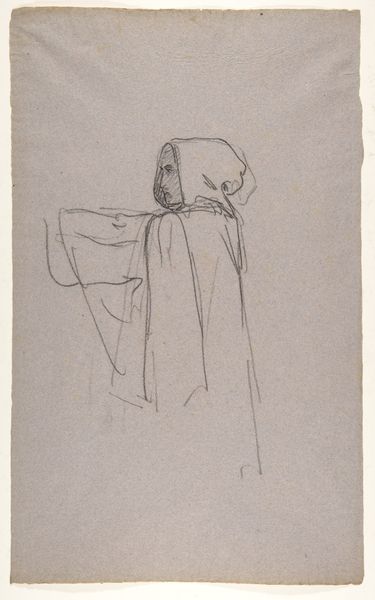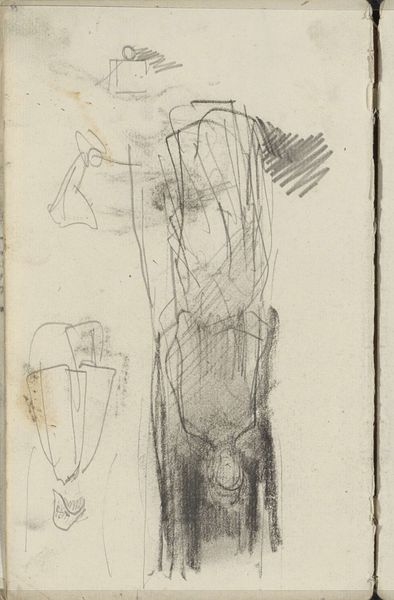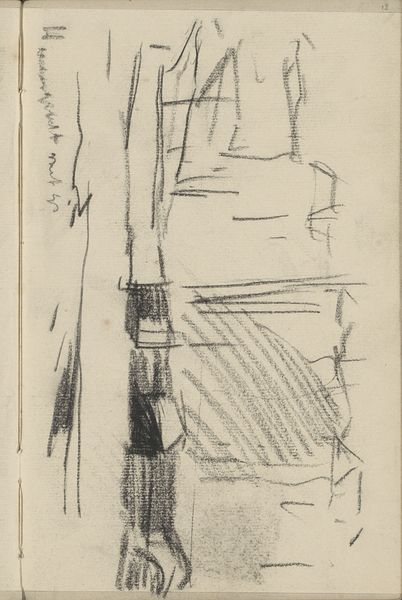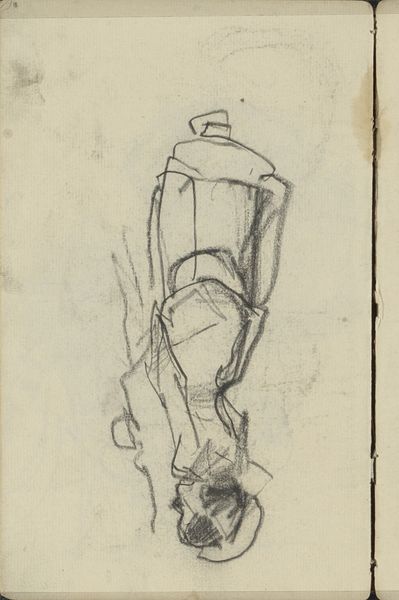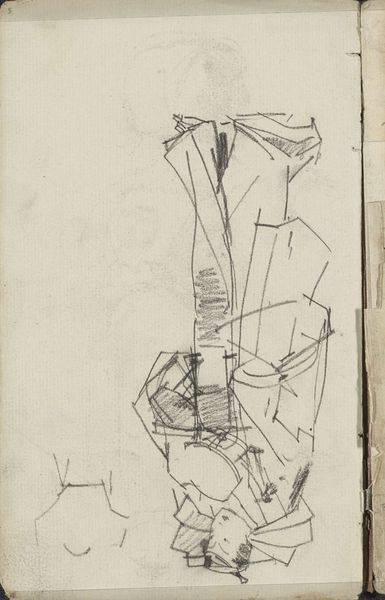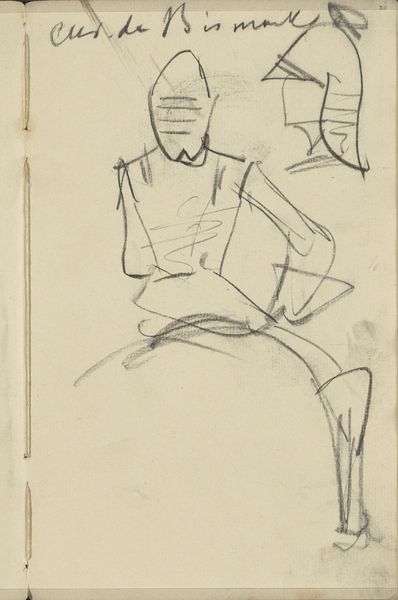
Copyright: Rijks Museum: Open Domain
Curator: Here we have George Hendrik Breitner’s “Study, possibly of the stern of a boat,” created around 1909. It’s a graphite drawing on paper, currently residing in the Rijksmuseum. What catches your eye about this sketch? Editor: Raw energy! It’s all these frantic lines—feels like he’s trying to catch a fleeting moment. It’s less about perfect representation and more about the kinetic energy of…something. What do you make of Breitner’s fascination with the harbor? Curator: Well, Breitner was deeply embedded in Amsterdam's urban life, especially during this period. Ports and shipyards weren’t just landscapes; they were economic engines, symbols of trade, labor, and social change. By choosing these subjects, he was commenting on the shifting dynamics of Dutch society. Editor: A silent witness, then? Capturing a bustling present for a future audience that’s us? Look at that stern again; those lines are so hesitant and assertive. It’s the tension between knowing a thing intimately, and the struggle to express it—to nail down something real with a bit of graphite. Curator: His impressionistic style certainly lends itself to capturing the fleeting aspects of modern life. Notice how he’s more interested in conveying the feeling of the boat’s presence rather than photorealistic detail. It fits within a larger context. He was a master of photography, as well, and consciously challenged the documentary style. He had a unique understanding of capturing real, lived time through artistic means. Editor: Interesting. The implied relationship between photography and sketch as documentation. All I get, though, is that I can smell the sea just looking at this—almost feel the damp air on my skin. It takes you there. Art as time travel, you know? Curator: I suppose, when considered from your vantage, it is less of a scientific record and more like a post-card. That has appeal. I see that as an interpretation. This work provides an entry point into the complexities of his social and artistic vision of early 20th-century Amsterdam. Editor: A fitting metaphor then: “stern.” He takes a firm hand to recording what will eventually float out of consciousness—or consciousness of future societies anyway. Okay, Breitner, I see you.
Comments
No comments
Be the first to comment and join the conversation on the ultimate creative platform.
